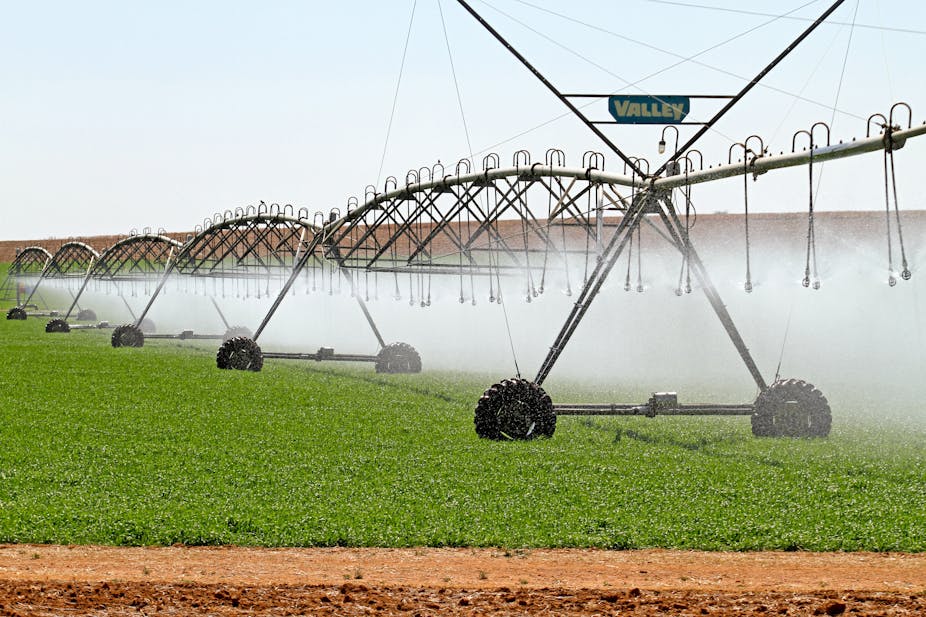The land reform debate in South Africa is dominated by a political agenda. This is a pity because other more relevant economic viewpoints on the subject are being ignored.
In 2015, when the last census took place, more than every second South African was marked as poor – a higher number than in 2011. For these millions of people access to affordable food and having enough to eat every day is a major challenge.
The price of agricultural products has risen steeply over the last seven years, illustrating how delicate agricultural production actually is. A basket of food items that cost R100 in 2010 rose to over R170 in 2017. A further price hike has to be avoided if the country is serious about eradicating hunger. On top of this, the price increases also reduce the disposable income of the middle class.
What this means is that politicians concerned with the structure of land ownership should also be evaluating how it will affect the supply of food. To do this, it’s imperative to understand what actually drives productivity in agriculture.
Across the world technology is enabling efficiency gains and productivity growth. Different technologies have been grouped with information technology and turned into entirely new production concepts. Modern agricultural production requires an approach that embraces technological opportunities. And breaking farms into smaller units makes the adoption of these technologies much more difficult.
In my view making South Africa’s agricultural sector more competitive is more important than fighting about political categories. While the skin colour of our farmers is of symbolic importance, the rise of the food prices is very real for everybody – particularly poor people. Breaking up the land into small-holdings with no capital will catapult the country back in time. South Africans should first be discussing how it can maximise food production through innovative technologies, and then how it shares the profits, or ownership.
Cutting edge technology
Precision agriculture, for example, builds on IT applications for soil and crop surveillance, helping farmers make optimal decisions about both. This reduces the use of contaminants and increases productivity. Mapping technologies based on satellite data, together with drones for crop scouting, has massively increased productivity in major crop-producing countries like Argentina, Brazil or Australia. Technological development has not only lowered the unit cost; it has also increased the productivity of land that wasn’t suitable for farming.
In the 1990s and 2000s machinery was becoming bigger in size and power. Now, they’re getting smarter. Agricultural equipment is increasingly performing automated work – from sewing to harvesting to packing and shipping. Fully automatic greenhouses or integrated industrial mini-mills with robotic production lines are no longer a thing of the future. While this new type of machinery holds the future of agriculture, it require substantial investments.
Another area where technological innovation can really help is in the threat posed by climate change. As global temperatures continue to rise, the consequences for water-based ecosystems will be dramatic.
To ensure food is still being brought to the table farmers will rely even more on resistant crops such as genetically modified organisms (GMOs). It has become widely accepted that the world won’t be able to feed its population without GMOs.
Many of these seeds require less input - like water, fertilizer and chemicals - as they are much more resistant. South Africa started testing GMOs at an early stage and approved modified cotton and maize variants in 1997. As such, agriculture GMOs account for the majority of the country’s field crops.
In addition, climate change is leading to many regions becoming more habitable for heat-loving pests and pathogenic agents. Here again, the country will have to rely on new technologies to control pathogens and to treat seed material.
Bigger versus smaller farms
Technological solutions are essential to competitive agriculture, but they are expensive and require large amounts of capital. As a result, agricultural producers all over the world have become larger – instead of smaller – as more land allows to make better use of these investments.
There are a number of drawbacks to smallholder production. The first is that, while technologies increase efficiencies and make smallholdings economically sustainable, it’s unlikely that a farmer on a small plot of land will be able to invest the money that is required.
The second is also related to investment: under private ownership, the farmer is required to make the necessary technological updates to stay competitive. The danger with state-arranged smallholdings is that investments are either not made at all, or they have to be shouldered by someone else. This could either be the consumers through higher prices or – what I consider more likely – the taxpayer.
Given that so many South Africans still go hungry every night, the country’s focus should rest on raising food production while lowering the prices that consumers pay. The country must not lose sight of the real issue: how to provide enough food to feed its people.

